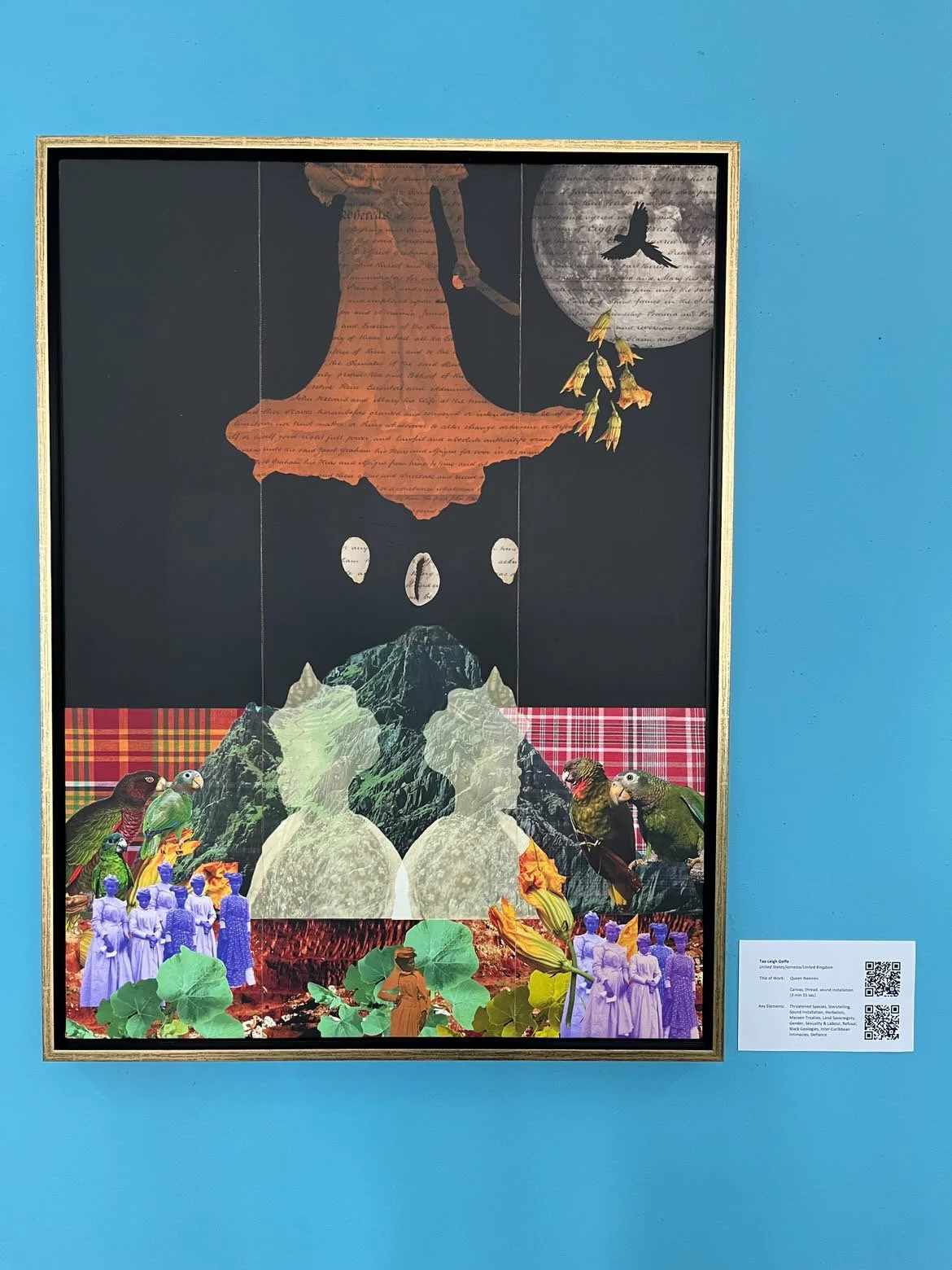maroon / mawon / marron (2022-Ongoing)
An archive of the ongoing series maroon / mawon / marron by Tao Leigh Goffe, what follows is an emphasis on process, experimentation, and iteration. A single question, “How does marronage translate across different national contexts?” is answered in analog and digital interpretations and artistic reckonings of fugitivity and insurgency. Black resistance transfigures across the Western hemisphere. A constantly shifting and mutating practice, translating the ineffable nature of marronage is all but impossible. This series maroon / mawon / marron challenges the binaries of gender essentialism, xenophobic nationalism, and language as barriers that attempt to contain and curtail radical acts of liberation and survival. Below listen to the sound installation on exhibition at the Institute of Jamaica as part of the group show Re-imagining Nanny of the Maroons (Nov 27, 2022-March 21, 2023) in Kingston, Jamaica.
Kill them with the “No!” (2022)
Sound Installation (3 minutes, 35 seconds)
Taking its name from the chorus of a well-known dancehall track, Kill them with the “No!” is a Black futurist mountain song. It is a reverberating soundtrack of call-and-response from the future to the past for Queen Nanny. This sound installation forms the digital audio component of the artwork Queen Nannies on display at the Institute of Jamaica as part of the Re-Imagining Nanny of the Maroons exhibition, activated by a QR code wall text at the gallery.
The abeng, the Maroon and Akan musical instrument formed from a cow horn, is in dialogue with dancehall in this sonic interpretation of futurist mountain songs of intergenerational communication. Imagining the echoes held by the Blue and John Crow Mountains, Grandie Nanny’s soundtrack of defiance is a chorus of ‘nos’ through Black survival. Jamaican parrots, crickets, and tree frogs form the nighttime symphony that comes alive when the sun sets. The heartbeat is the drumbeat of Black resistance, a pulse that forms the beats per minute (BPM) of the African diaspora’s tempo.
Queen nannies (2022)
Canvas, Gold Thread, Golden Frame
30 x 40 inches
Among the inheritors of Queen Nanny’s defiance, many Black people refuse the terms of surrender because the battle against European colonial conquest is not complete. Beyond Nanny Town in Jamaica, Grandie Nanny’s lore spawned an army across the generations and across geographies of women and femmes with their heads held high in defiance. The Black gaze challenges the viewer by saying, “No!” There is a Jamaican inflection of a type of “No!” that cuts differently than how “no” is said in other languages. Queen Nannies is a statement about how the legacy of the revered Akan warrior queen multiplies. Her “No!” echoes outward across the archipelago.
Jamaican women know how to say, “No.” Part of saying “No” is the art of survival, which Queen Nanny practiced for her people with West African horticultural and religious ritual practices including Obeah that continue across space and time. Petals of the pumpkin blossom in Queen Nannies form the bell of her dress. The figure with its back turned to us, walks into the far future gripping a machete. The war between West Africa and Western Europe is not over and there are many generals who continue to follow Nanny’s battle plan of resistance. Through gran and petit marronage, people of the African diaspora across the Americas from the Blue and John Crow Mountains to the Great Dismal Swamp to the interior of Suriname’s rainforest continue to fight in major and minor acts of refusing European colonialism.
Though Grandie Nanny died in 1733, in this painting she is invoked as continuing to recruit battalions. Those who in their everyday lives are underestimated stand tall situated here as healers, herbalists, gardeners, domestics, military strategists, and commanders. They are the global workforce of nurses, nursing home workers, and nannies who have migrated from the Caribbean for over a century. An exploited labour force paid meagre wages, their job is to care for others. Queen Nannies depicts the collective power of these workers and their knowledge in cultivation, raising children, and caring for the dying. Pictured are photographs of migrant domestic women workers from the French Caribbean in the 1910s who form a collective. Black women’s labor circulates across the globe while their mobility is limited.
The twin mountain structure connects the Black geologies and bedrock of the Caribbean archipelago and the history of women maroons in Jamaica and Dominica. The tartan patterns associated with both sovereign nation's form the backdrop for the women’s figures layered on a mountain that forms an island. Mountainous terrains and the hinterlands were a sacred and lush spaces of refuge and ceremony for Maroons in Jamaica and Dominica.
I founded the creative technology studio called Dark Laboratory in 2020 with the ethos of exploring what has been stolen from Black and Indigenous people and honoring the many creative ways we continue to survive. European colonialism pitted Amerindian and Black lives against one another in the crossroads of the Western hemisphere. Camouflaged are deep histories of Maroon and Taíno coalition that we taste in our cuisine. The darkened backdrop represents the dark of night, illuminated by the moon. A colonial era text from a slave registry is faintly imprinted as a backdrop evoking the night sky. Parrots, threatened endemic species in Jamaica and Dominica, stand guard to the Queen Nannies for what is to come regarding the future of Caribbean sovereignty.



